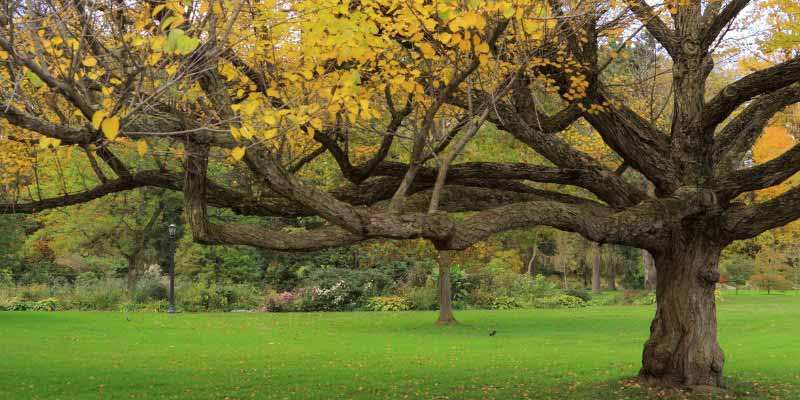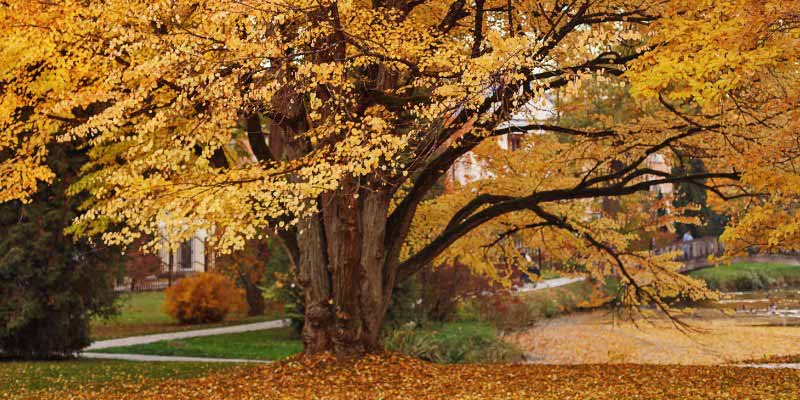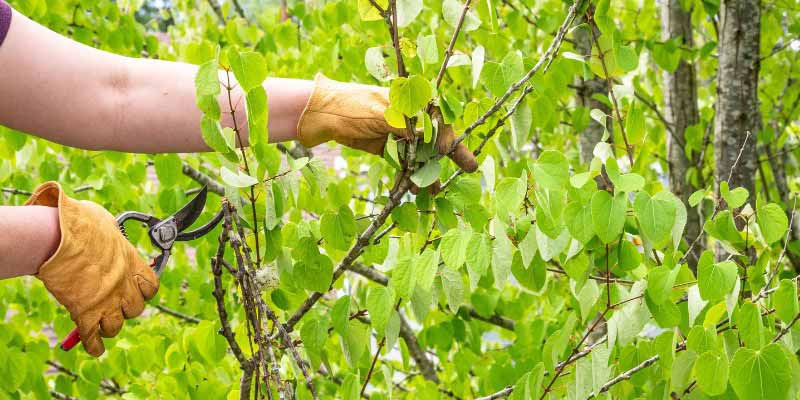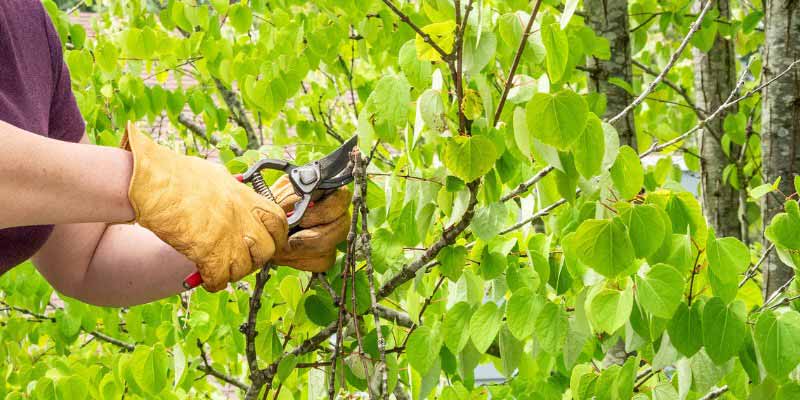The Cercidiphyllum japonicum, commonly known as the Caramel tree, is an ornamental tree prized for its highly decorative foliage, which takes on splendid autumn colours. Native to Japan and China, this tree forms a majestic silhouette that can reach heights of 12 to 15 m. It has heart-shaped leaves that take on purplish hues in spring when they emerge, turn green in summer, and colour to yellow and copper-red in autumn before falling. They then release a scent of caramel or gingerbread, which earns it the nickname caramel tree. Although the Cercidiphyllum does not require extensive pruning, some well-considered interventions can contribute to its health and beauty. Discover our tips for pruning it correctly!
Feel free to also check out our complete guide on growing the Cercidiphyllum

Why prune the caramel tree?
The Cercidiphyllum does not necessarily need to be pruned, generally it can do without this intervention. However, in some cases, pruning can be beneficial. It allows in particular to remove dead, diseased, or damaged branches, which reduces the risk of diseases and promotes the circulation of sap to the healthy parts of the tree. This limits the risk of fungi or pests appearing. Pruning also helps maintain a beautiful structure. Even though the caramel tree naturally has an elegant silhouette, pruning can help balance its shape, especially if some branches grow in a disorderly manner. It also helps to limit its size, which can be useful if you have a small garden or limited space. Finally, pruning allows for improved air circulation and light exposure, which promotes the tree's good health.

When to prune the caramel tree?
The best time to prune the Cercidiphyllum is at the end of winter - beginning of spring, just before the resumption of vegetation. At this time, the tree is still in dormancy, which reduces the stress associated with pruning and promotes quick healing of wounds. It is also possible to prune it in autumn, after the leaves have fallen.
The necessary equipment
- A sharp pruning shear: Ideal for small branches up to 2 cm in diameter.
- A branch cutter (or lopper): Perfect for thicker branches, up to 5 cm in diameter.
- A pruning saw: Necessary for larger branches.
- Gardening gloves: To protect your hands from cuts and splinters.
- Disinfectant (denatured alcohol or diluted bleach solution): To clean the blades after each cut, especially if you have pruned diseased branches.
- Some mastic to promote healing on larger pruning wounds
Safety tips
If you need to work at height:
- Use a stable stepladder.
- Wear safety glasses to avoid sawdust or small debris flying into your eyes.
- Ensure the area is clear to avoid any risk of branches falling on people or objects.
How to prune the caramel tree?
Let’s get practical! Pruning a tree may seem daunting, but by following these steps, you’ll see it’s simpler than it looks.
1- Observe the tree before pruning
Before you start, take the time to observe your tree from different angles. Identify any dead, diseased, or damaged branches, as well as those that cross or seem poorly positioned. Also, identify branches that disrupt the tree's shape. Visualise the harmonious silhouette you wish to achieve after pruning.
The idea is to keep the tree's natural structure in mind, intervening lightly and thoughtfully.
2- Remove dead or diseased branches
Start by cutting off dead branches, identifiable by their dry and brittle appearance, often lacking buds. If you spot diseased branches (presence of spots, fungi, etc.):
- Cut well below the affected area.
- Disinfect your tools between each cut to prevent the spread of diseases.

3- Aerate the heart of the tree
To promote air circulation and light penetration:
- Remove branches that cross or touch, as they may hinder each other's growth.
- Thin out the inner branches if the centre of the tree is too dense. This will also highlight the tree's beautiful structure.
4- Balance the tree's silhouette
If you wish to harmonise the shape of the tree:
- Lightly shorten branches that disrupt the silhouette.
- Make clean cuts, just above an outward-facing bud. This encourages outward growth, preventing the tree from becoming too compact.
- Angle the cut slightly so that rainwater drains easily, reducing the risk of rot.

5- What to do with thick branches?
For thick branches:
- Start by making a safety notch on the underside of the branch, about 20 cm from the trunk, to prevent it from tearing as it falls.
- Then make the main cut a few centimetres further along.
- Finish with a clean cut near the trunk, without damaging the collar (the small swollen area at the base of the branch), as this is where healing is most effective.
Our additional tips for a healthy Cercidiphyllum
- Apply healing mastic on larger wounds to limit the risk of diseases.
- Monitor regrowth: in spring, observe how the tree responds to pruning. This will allow you to adjust your approach for the following years.
- No severe pruning! The Cercidiphyllum does not respond well to drastic pruning. It is better to intervene lightly each year than to have to make large corrective cuts.
- Water well after pruning, especially during dry periods. This helps the tree recover from stress.
- Consider mulching at the base of the tree to retain moisture and protect the roots from temperature fluctuations.
































Comments